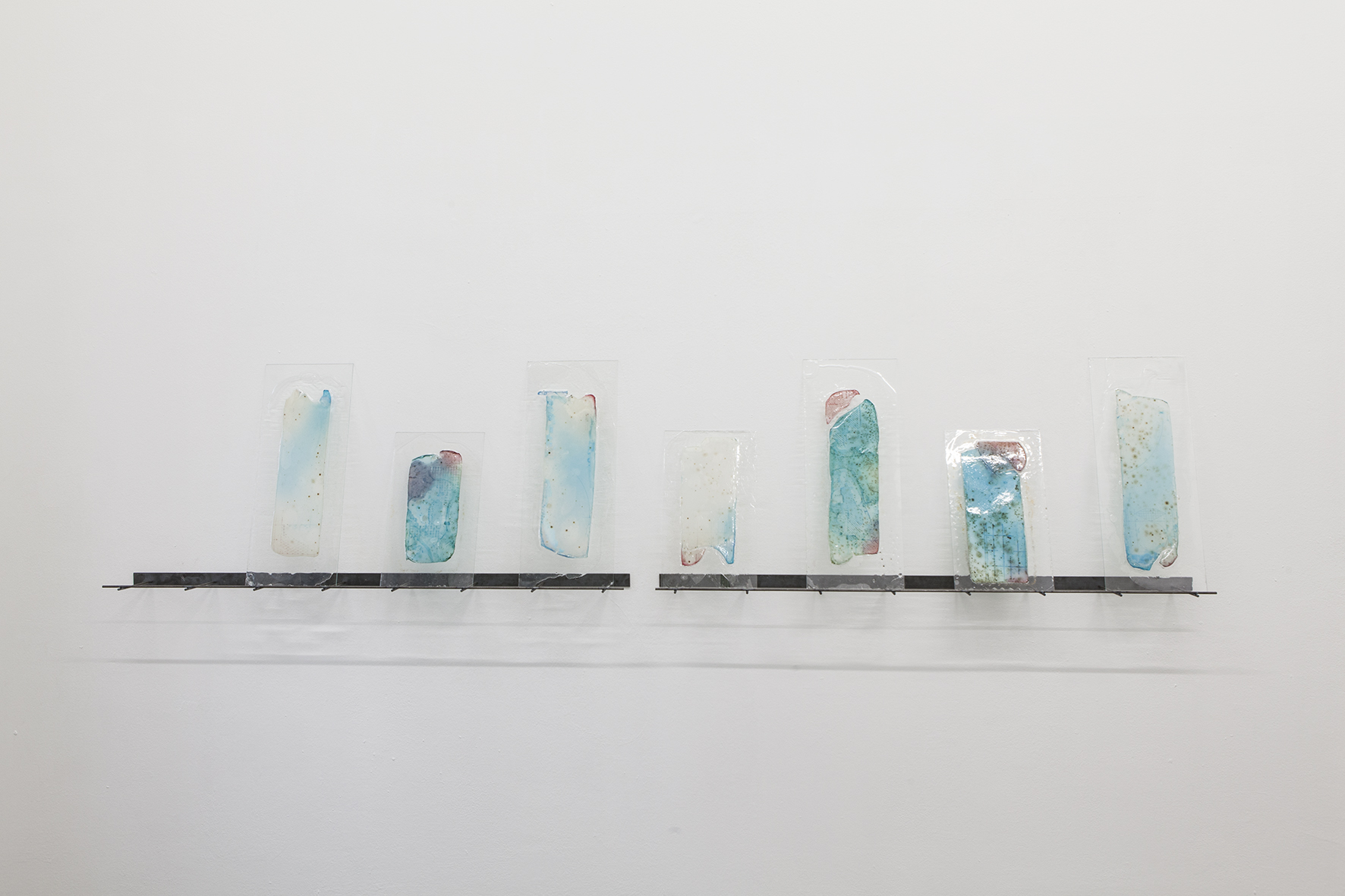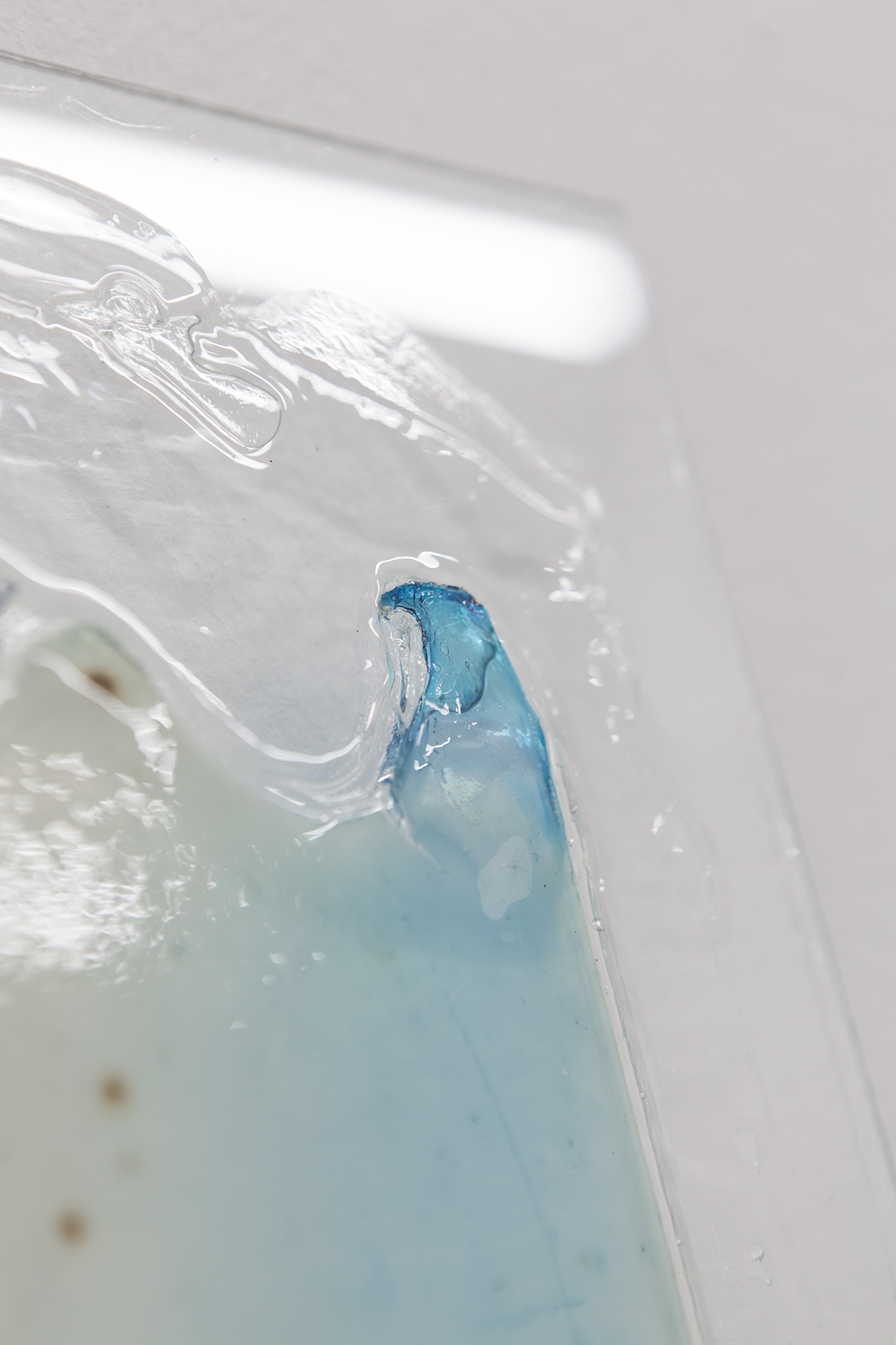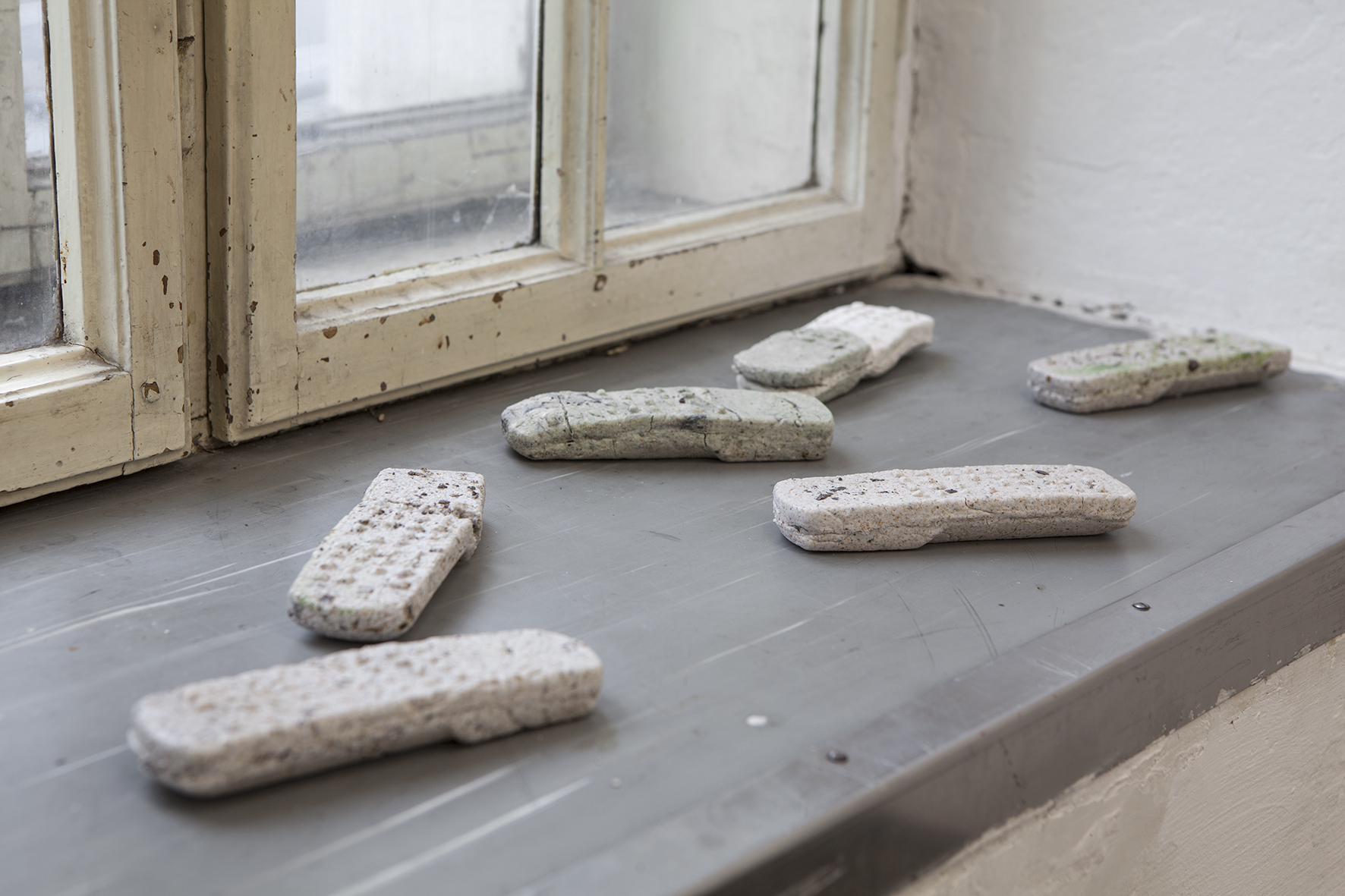Resolution
a contribution within the group exhibition
Mud mother#1/Bathybius Haeckelii
Vienna, 2021
Installation with printed Yeast on Agar-Cultures (alive & preserved), Glass, Ventilation-System, Metal,remote controls made from experimental ceramics (Anthropogenite)
In 1868, while re-examining a sample of mud he collected
several years before from the Atlantic seafloor, British biologist Thomas Henry
Huxley noticed that it now contained an albuminous slime appearing to be
criss-crossed with veins. Huxley thought he had discovered a new organic
substance, which he named Bathybius haeckelii in
honor of the German biologist Ernst Haeckel, who in his work theorised about
Urschleim ("primordial slime"), a protoplasm from which all life had
originated. Huxley believed Bathybius could be that protoplasm, a
missing link between inorganic matter and organic life. He went on to assume
that the substance formed a continuous mat of living protoplasm covering the
whole ocean floor for thousands of square miles, probably a continuous sheet
around the Earth. However the marine research of 1872 discovered no such thing
and soon after Bathybius haeckelii was proven to be nothing more than a
reaction of a calcium sulfate from the seawater to the alcohol used to preserve
the original mud sample. The primordial slime concept remains a scientific curiosity,
yet was one of the early strong cases in support of evolutionary origin of life
from nonliving chemistry to biology.
When you
would gently push the surface of your laptop-screen, you would feel the viscous
consistency of crystalline slime. Liquid Crystal Displays (LCDs) are based on
the work of physicist Otto Lehman and botanist Friedrich Reinitzer, who discovered
the liquid crystalline nature of cholesterol extracted from carrots in 1888. As
Reinitzer had no explanation for this aggregate state between liquid and hard,
he involved Lehman, who worked on a pasty modification of silver iodide. In this
fourth state of mesomorph matter a lot of different substances show a strong
light refraction under the polarisation microscope. Lehmann called them liquid
or runny crystals, a status he differentiated from a hard or colloidal form of
crystals, last one famous as chromatic dazzling film on soap bubbles. Other
well-known examples of liquid crystals are detergents,
as well as the tobacco mosaic virus, and some clays. Lehmann was very
attracted of Bathybius haeckelii and speculated about characteristics of
his liquid crystals as indicators of life. It needed until the 1970s that companies
filed different patents, which used liquid crystals for light-controlling, a
technology which shaped the last decades of digital devices.









